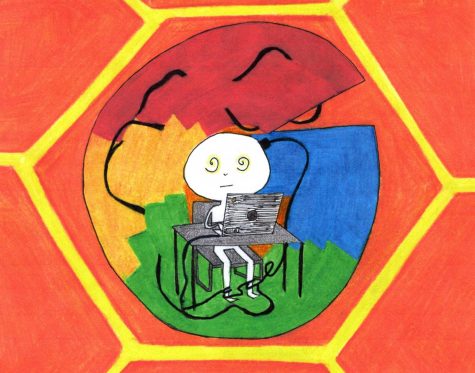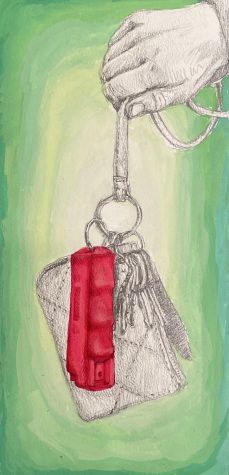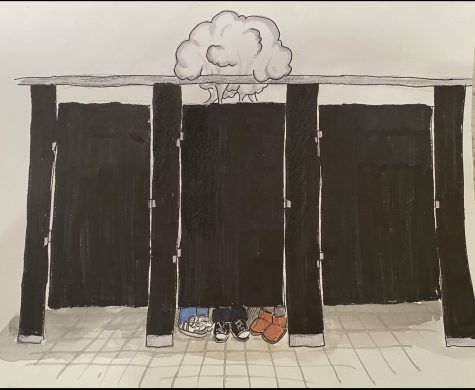@ Me Next Time
Everyone has their own means of livelihood: lawyer, firefighter, teacher, etc. Each position holds its own expectations, monetary support, you name it. From a young age for some, working becomes a lifestyle, let alone doing any sort of activity that is not school or sports. Needless to say, it is typical for someone to have some sort of interest or recreation. Mine is photography.
As long as I can remember, my mom was the one with a camera always in hand, and quickly I grew to assume that role as my own. My clunky point-and-shoot eventually evolved into a DSLR, a more professional digital camera, and my hobby evolved into an occupation. Through the years, I gained experience and in no time began to notice one problem with photographs being posted: sometimes they lacked a credit to the photographer. When I was younger, that was sort of brushed aside, thinking that it was only common for newspaper publications. This is far from the case, and with the increasing prevalence of social media in our daily lives, this problem has grown substantially: the problem being the ignorance towards the necessity to credit a photographer’s work.
When it comes to sharing photographs on social media, “I think everybody loves enjoying–looking at pictures, and it kind of brings them back to that memory of whatever that photograph is of,” said Autumn Bland, Div. 656, administrator of the Humans of Lane Tech Facebook page, said when asked how people react to seeing her photographs on social media.
Lately social media has become somewhat of a best friend when sharing my work. The company that I work for is based online, rooted in social media such as Twitter and Facebook. I will photograph an event, put the photos through my computer, apply my watermark to them, and post them to various sites to draw the viewers and the subjects from the events. Today, the instant gratification factor for people is at an all time high, and that causes people to act hastily.
In a world where everything is immediately available, or at least that is how people wish it were, the act of being courteous to the artist can be overlooked. Of course, what more is it than having a name below a picture? It is not that important, right?
Wrong. In school, we are always trained to avoid plagiarism at all costs, to not use other people’s work without proper credit. Most people don’t have a problem with this; however, when it comes to photos, it is sometimes overlooked. You see a picture that you like online, maybe of you, and you want to post it. Clearly it has a name attached to it, either from the website, a watermark, whatever it may be. The photographer’s name is there for a reason, just as the author’s name under the headline of an article is there for a reason.
“People need to understand that the photograph that you take is [the photographer’s] property and not just for you to use at your free will,” Bland said.
Just as a firefighter makes their living off of fighting fires and a writer makes his or her living off of writing, for a photographer it is their livelihood. To fail to give credit to the photographer is not only an insult to the photographer’s work, but stealing.
A way many photographers try to avoid such a problem is by applying a watermark to their photos, which typically is the photographer’s name somewhere on the photograph. To the viewers, sometimes this is deemed “unnecessary,” yet it is merely like signing a painting or typing your name under the headline.
I have faced many issues with this simple group of pixels on a photograph, being the watermark. Most of these cases are of people taking the time to “crop it out,” while not spending the same amount of time to write the photographer’s name below the photograph.
In the modern education system, there is so much emphasis on sourcing correctly, and using websites like turnitin.com to ensure that plagiarism is non existent. Yet when it comes to photographs nowadays, such details are left out, as if they “weren’t taught this in school” as I heard the other day from a source.
There are many routes to fixing such an issue, but the simple answer to this problem is respect.
Your contribution will allow us to cover our annual website hosting costs, which are no longer covered by our district/school. If we do not meet our goal, we may lose this website and its archive of stories covering 2009-2023. Student journalists at Lane Tech use this archive to research past coverage of various topics and link to past stories to offer readers additional context for current stories. Thank you for supporting the award-winning reporting and writing of journalism students at Lane Tech College Prep!
Background information on why the school district no longer allows our school to cover web hosting costs:
https://lanetechchampion.org/12583/uncategorized/special-coverage-impact-of-soppa-on-cps-students-teachers/
https://lanetechchampion.org/11702/opinion/staff-editorial-cpss-soppa-policy-is-choking-students-learning-and-the-champion/








